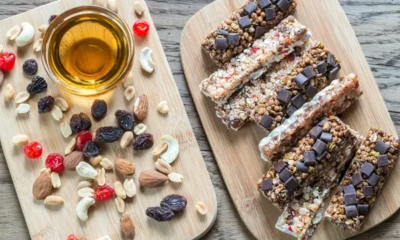Bakery
Understanding the Clean Label Bread Consumer

As consumers grow increasingly health-conscious, the bread industry has seen a shift towards clean label products. This trend reflects the growing demand for transparency in ingredient lists and a preference for simpler, recognizable ingredients. A recent study commissioned by Lesaffre Corp. explored the clean label bread consumer and uncovered several key insights into what drives purchasing decisions in this space.
Key Insights from the Study:
What “Clean Label” Means to Consumers
- Consumer Awareness: While many consumers are familiar with terms like “clean eating” (68%) or “clean label” (64%), they do not necessarily identify as “clean label shoppers.” Instead, they prefer terms such as “balanced” or “whole”.
- Ingredient Simplicity: Consumers tend to equate “clean” products with recognizable ingredients (56%) and short ingredient lists (65%). They seek breads made with ingredients they understand and can easily pronounce.
Ingredients Consumers Consider “Clean”
- Avoiding Unfamiliar Additives: 37% of consumers avoid products with ingredients they can’t pronounce, while 29% reject those they perceive as unhealthy or unnatural.
- Preferred Ingredients: The most favored ingredients are those familiar to consumers, such as fiber, calcium, and yeast. These ingredients are seen as both wholesome and essential.
Consumer Expectations Beyond Ingredients
- Information-Seeking Behavior: A large majority (74%) of consumers are more likely to choose a different brand if provided with in-depth product information. Over half (56%) read nutrition labels carefully before making a purchase.
- Packaging Matters: Consumers also evaluate packaging for indicators of authenticity, simplicity, and transparency. Reduced packaging and a handcrafted look are key visual cues that suggest a product aligns with clean label expectations.
Taste and Texture Are Priorities
- Despite the emphasis on clean ingredients, taste and texture remain the top priorities for consumers when selecting bread. Over half (57%) of respondents stated that enjoying the food is crucial in their decision-making process.
Challenges for Bread Manufacturers
- Balancing Taste with Clean Label: Creating breads that meet the clean label demand while maintaining the desired taste and texture can be challenging. Ingredients like emulsifiers and anti-staling agents are typically used in production to achieve consistency and softness, but these can be perceived as “unnatural” or difficult to pronounce by consumers.
- Clean Alternatives: To address this, manufacturers are turning to ingredients like enzymes as clean alternatives to emulsifiers and anti-staling agents. These can help maintain texture and extend shelf life while meeting clean label standards.
Takeaways for Bread Manufacturers:
- Ingredient Transparency: Simplify ingredient lists and prioritize familiar, recognizable ingredients that consumers trust, such as fiber, calcium, and yeast.
- Clear Product Information: Provide detailed product information on packaging, as consumers are more likely to choose brands that offer transparency about ingredients and production processes.
- Alternative Ingredients: Explore clean alternatives like enzymes for dough conditioning and shelf-life extension to maintain product quality without compromising on label integrity.
- Taste and Texture: Ensure that taste and texture are not sacrificed in favor of a clean label. Balancing these factors is key to maintaining consumer satisfaction and loyalty.
By aligning with these preferences, bread manufacturers can tap into the growing market for clean label products, meeting consumer demands for both health-conscious and delicious options.
Continue Reading





















